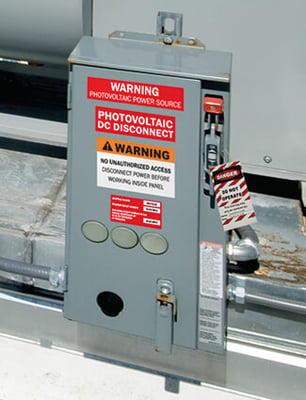Crucial Steps to Reduce Lockout Tagout Violations
03
February,
2023
3 MINUTE READ

Imagine crawling into a conveyor machine to get to a crucial component. If that machine isn't turned off properly, the results can be catastrophic. While lockout/tagout seems like a simple enough safety system to follow, there are thousands of violations each year and injuries and deaths from failure to use it. Why are these types of violations prevalent enough to land among OSHA's Top 10 violations each year? Workplaces can take better control of LOTO by understanding several key problems and how to mitigate them.
Understanding the Statistics
According to a Bureau of Labor Statistics report on leading workplace injuries, the transportation and warehousing industry had one of the highest rates of workplace injuries in 2019 (213,100 workplace injuries and 8,300 workplace illnesses). Among those injuries was failure to use lockout/tagout. LOTO is meant to protect workers around machines and equipment with electrical, mechanical, hydraulic, pneumatic, and chemicals. When these items are not effectively shut down for maintenance and services, it is an unwilling invitation for disaster.
What do workers and safety managers have to say about lockout tagout and its misuse?
"For a lot of workplaces, it's all about profits," said Amir Murabi, a safety manager in Colorado. "In the past place where I've worked, they didn't want to stop machines or mold pours and such, and maintenance would be done while they were running. It's not efficient when you look at it from today's standards."
"When there is more paper than process, that is annoying. If you need to jump through two hoops vs. 10 hoops. Same goes for daily pre-shift type inspections," said safety manager Daniel Cardenas in California.
"Deisolating equipment and closing out the paperwork but not logging it on the register. So, if it was audited, it would show still isolated in the register, but in fact, it was deisolated weeks ago," said Gabriel Velasco, a safety expert in Michigan.
"Different places have different rules, but it's really not that complicated, although they try to make it seem like it is," said Buddy Norton, an industry expert in Texas. "Partly because the places, different plants, etc. seems to make it sound like it's more complicated than it is, and the workers feel over pressured and get confused."
In 2020, LOTO was the sixth most frequently violated OSHA standard, with 2,065 violations recorded. Among the common activities that warrant those violations were:
- Inadequate lockout/tagout program
- Not requiring employees to apply their own locks
- Failure to train employees
- Wrong use of tags and locks
- Not identifying energy sources
OSHA also requires an annual review of lockout/tagout procedures and to ensure that all workers know and understand hazardous energy sources.
"I just did an audit on our LOTO policy. I found all of the paperwork to be perfect. Almost too perfect, as if it had been pencil whipped. I spent a week following the crews around (openly) and reviewed the procedure as they were going through it. They were actually doing exactly what they were supposed to be doing," said safety expert Michael Hleback in Ohio. "My biggest peeve is when the policy is not used as intended and the paperwork is pencil whipped."
Remove Safety Blocks
 When it comes down to mitigating hazards and using lockout/tagout, there are two significant hurdles: top-down, high-quality safety leadership and continuous training. When workplace leadership mandates and supports strong safety programs that follow standards and concepts, the effects resonate throughout the workforce. Reinforce these safety programs and training by using reminder tools such as signs, labels, and floor marking. These tools can communicate procedures, sustain 5S, and keep locks and other mechanisms organized.
When it comes down to mitigating hazards and using lockout/tagout, there are two significant hurdles: top-down, high-quality safety leadership and continuous training. When workplace leadership mandates and supports strong safety programs that follow standards and concepts, the effects resonate throughout the workforce. Reinforce these safety programs and training by using reminder tools such as signs, labels, and floor marking. These tools can communicate procedures, sustain 5S, and keep locks and other mechanisms organized.
When lockout/tagout is used correctly, the procedures offer unparalleled protection. Workers need to be trained on the steps and the reasoning behind them for the process to be effective. Different workers will need different kinds of training, and workplaces can easily adjust training to match workers' needs. Provide additional training to workers who OSHA considers to be determined as authorized workers. Be sure that workers understand that they should not be removing other workers' tags or locks or attempting to start up equipment that other workers have locked or tagged out. Frequently practice and apply the real-world steps for LO/TO on each piece of equipment.
Get a head start on training workers for lockout/tagout with our complimentary Lockout/Tagout safety and compliance guide.
RELATED RESOURCES

3 Ways to Improve Ammonia Handling
In refrigeration and HVAC, it's out with old, complex systems and in with new, efficient and sleek ammonia ...
Read
NIOSH Digs Into Electrical Safety in Mining
To help solve mining work safety and health challenges, NIOSH continually researches best practices through ...
Read
Distillery Switches from Whiskey to Sanitizer
An Oregon distillery puts aside normal whiskey production to help fill the hand sanitizer needs as ...
Read.png)


